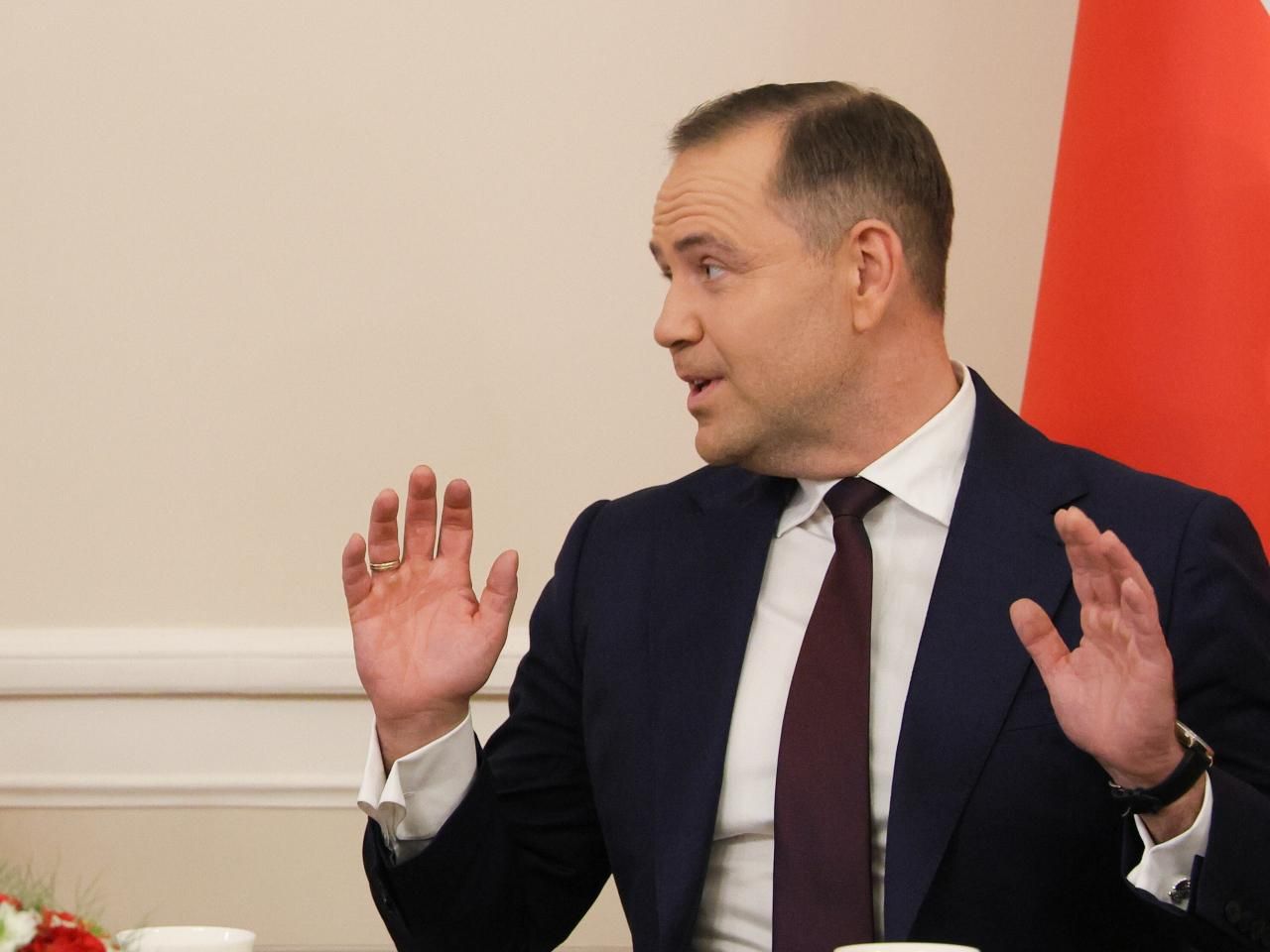
ФРС очень обеспокоена прохождением тарифов через цены
Автор Майк Шедлок через MishTalk.com,
ФРС, предприятия и потребители обеспокоены ростом цен.

Беспокоитесь о ценах?
Пожалуйста, обратите внимание на исследовательскую статью Федерального резервного банка Атланты «Беспокойство по поводу прохождения тарифов по ценам». Это и есть бизнес-эксперты.
За последние пару месяцев новостные ленты сосредоточились на потенциале повышения тарифных ставок для повышения инфляции и потенциального влияния на рост производства. Действительно, Председатель Пауэлл на своей последней пресс-конференции после заседания FOMC сказал: "Что выглядит вероятным, учитывая масштаб и масштаб тарифов, так это то, что... Риски повышения инфляции, роста безработицы возросли."
Недавние исследования экономистов из Федерального резервного банка Атланты показывают, что если фирмы смогут пройти через все затраты на тарифы, розничные цены значительно увеличатся - до 1,6 процента (в зависимости от того, как отсюда будут развиваться эффективные тарифные ставки).
И даже при 50-процентной пропускной ставке влияние на цены будет достаточно большим, чтобы ощущаться в совокупности (рост розничных цен на 0,8 процента). Насколько правдоподобно полное прохождение? Возвращаясь к последнему эпизоду с ростом тарифов в 2018 году, иконка исследования, обозначающая ссылку назначения, показала, что стоимость тарифов почти полностью перешла на внутренние цены.
В этих условиях, когда изменения в политике приводят к резкому увеличению затрат для многих фирм, нам было любопытно, как фирмы будут реагировать, особенно в свете потенциального сокращения спроса, которое обычно сопровождает повышение цен. Таким образом, мы обратились к обзору ожиданий деловой инфляции (BIE) Федерального резервного банка Атланты, ежемесячному опросу фирм Шестого округа, которые имеют хорошие возможности своевременно задавать вопросы об экономических условиях, с которыми сталкиваются фирмы. При сборе информации для опроса BIE в апреле 2025 года мы спросили фирмы об их способности преодолевать повышенные затраты, вызванные новой экономической политикой. без Результирующее снижение спроса.
Интересным поворотом в этой линии допроса является включение фразы "Исходя из текущего уровня спроса." Интерпретация здесь заключается в том, что фирмы говорят нам, сколько из увеличения стоимости они смогут передать клиентам, прежде чем это окажет негативное влияние на спрос на этот товар или услугу.
Хотя разнообразие мнений очевидно, в среднем фирмы говорят нам, что они ожидают, что смогут пройти через 51,1 процента 10-процентного увеличения затрат и 47,3 процента 25-процентного увеличения затрат, не снижая текущий уровень спроса.
В целом, фирмы с нормальными или более чем нормальными продажами ожидают, что смогут пройти через большее увеличение затрат при сохранении того же уровня спроса на свои товары или услуги. И цифра 3 показывает нам, что эти фирмы, скорее всего, будут более крупными фирмами из-за их меньшего разрыва в продажах по сравнению с «нормальными». В целом, руководители компаний видят свои текущие уровни продаж примерно на 8 процентных пунктов ниже «нормального», что намного слабее, чем относительная позиция компаний, вступающих в 2018 год. В этих условиях фирмы в среднем ожидают, что они проведут чуть более половины 10-процентного роста затрат без ущерба для спроса. Пока не ясно, где в конечном итоге будет установлена средняя тарифная ставка или как отсюда будут развиваться промежуточные ставки фирм. Тем не менее, похоже, что большинство компаний ожидают, что они пожертвуют спросом, если они решат полностью передать повышение затрат, связанных с тарифами, клиентам.
Только три вещи могут произойти
Корпорации могут пройти по тарифам
Корпорации могут съедать расходы
Комбинация вышеперечисленных
Результаты
В той мере, в какой корпорации передают расходы, потребители будут платить тариф. Это означает, что потребители будут сокращать где-то еще, истощать сбережения или влезать в долги.
В той степени, в которой корпорации съедают затраты, это напрямую влияет на прибыль корпораций.
Если корпорации неправильно оценивают, сколько они могут передать, они также нанесут удар по прибыли.
Корпоративная прибыль
Если вы думаете, что тарифы являются огромным расходом на совокупную корпоративную прибыль, то вы думаете правильно.
Бежевая книга ФРС показывает, что только 3 из 12 регионов растут, 6 сокращаются
5 июня 2025 года, отметил Бежевая книга ФРС показывает, что только 3 из 12 регионов растут, 6 сокращаются
Этот отчет пахнет стагфляцией, определяемой как рост цен и рецессия одновременно.
Цены
Цены выросли умеренными темпами с момента предыдущего отчета. ТТЗдесь были широко распространены сообщения о контактах, ожидающих, что затраты и цены будут расти более быстрыми темпами. Несколько округов описали ожидаемое увеличение расходов как сильное, значительное или существенное. Во всех районных докладах указывалось, что более высокие тарифные ставки оказывают повышательное давление на издержки и цены.
ISM-сервисы сокращаются как новые заказы и отставания
4 июня мы отметили ISM-сервисы сокращаются как новые заказы и отставания
«Индекс цен в мае составил 68,7 процента, что на 3,6 процентного пункта больше по сравнению с апрельским показателем в 65,1 процента; за последние два месяца индекс поднялся на 7,8 процентных пункта, достигнув самого высокого уровня с ноября 2022 года (69,4 процента). Это первый раз, когда индекс зафиксировал этот высокий двухмесячный рост с 9,2-процентного прироста в феврале и марте 2021 года. Майское чтение также является шестым подряд, выше 60%. "
Что привлекло мое внимание, так это падение новых заказов и отставание заказов, но цены росли 96 месяцев подряд и только ускорились.
Должен ли ФРС сократиться? Поход? Делаешь что-нибудь?
Многие говорят, что ФРС должна сократиться, потому что рабочие места замедляются, как и инфляция.
Но на основе тарифов и общих разногласий по поводу темпов инфляции многие другие утверждают, что ФРС должна повысить ставки.
Те, кто открыт для стагфляции или экономического коллапса, не думают, что ФРС должна что-то делать.
Я нахожусь в этом лагере с боковой нотой, что свободный рынок должен устанавливать ставки, а не ФРС, не Конгресс, не президент.
ФРС находится в хорошем месте?
Вот что говорит ФРС. Я не в этом лагере.
Экономика может резко и резко измениться в любом случае. И тарифные кнуты Трампа не облегчают жизнь ФРС.
Страх совершить ошибку
ФРС не хочет делать политическую ошибку в неправильном направлении, особенно после того, как она взорвала массивную инфляционную реакцию на свободные деньги Конгресса в сочетании с безумным QE.
Таким образом, ФРС не может быть проактивной сейчас, даже если она хочет, из-за FOMMtm.
Трампианские вопли
У ФРС есть ошибка Ковида в глубине души, но воющий Трамп на переднем плане.
Трамп снова вопил о Джероме Пауэлле 4 июня, как отмечается в заявлении Трампа, требуя снижения ставки ФРС после самого слабого отчета ADP о заработной плате за 2 года
ADP сообщила о незначительном росте заработной платы на 37 000 человек в мае.
Отчет о заработной плате в пятницу временно остановил вопли.
Для обсуждения см. Nonfarm Payrolls Rise by 139 000 Employment Declines by 696 000
ФРС может легко реагировать слишком остро или недостаточно. Прямо сейчас ФРС выглядит как олень в фарах.
Наконец, ФРС будет принимать много критики, независимо от того, что она делает. И он по-прежнему будет иметь в виду свои недавние политические ошибки, а также иметь дело с Трампом.
Это действительно хорошее место для ФРС?
Тайлер Дерден
Мон, 06/09/2025 - 05:00













![Makabryczne odkrycie w lesie. Tak skończyły się poszukiwania dwóch zaginionych [ZDJĘCIA]](https://www.eostroleka.pl/luba/dane/pliki/zdjecia/2025/271-220209.jpg)


